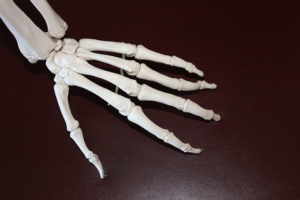QLY-treated rheumatoid arthritis animal models. | JIR – Dove Medical Press
Introduction
In spite of the significant advancement in medical science in the past decades, the successful treatment of rheumatoid arthritis (RA) is still a big challenge. It is a consensus nowadays that RA is mainly driven by CD4+ T cells.1 The expansion of autoreactive T cells occurs several years before the clinical manifestation of RA.1,2 It serves as an important indicator of self-tolerance breakdown, and it also positively correlates to arthritic manifestations.2 Infections, …….
Introduction
In spite of the significant advancement in medical science in the past decades, the successful treatment of rheumatoid arthritis (RA) is still a big challenge. It is a consensus nowadays that RA is mainly driven by CD4+ T cells.1 The expansion of autoreactive T cells occurs several years before the clinical manifestation of RA.1,2 It serves as an important indicator of self-tolerance breakdown, and it also positively correlates to arthritic manifestations.2 Infections, major histocompatibility complex gene polymorphism, environmental pollution, and unhealthy life habits can all possibly initiate this abnormality.3 Through excretion, autoreactive T cells reshape the immune milieu of RA patients.2,3 As a result, T cells are dominantly differentiated into inflammatory phenotypes. The population of Th1 and Th17 cells are significantly expanded, while the development of Th2 and Treg cells is impaired.1,3 Initially, Th1 cells were thought to situate in the center of RA pathology because its inflammatory nature is well accepted and high levels of IFN-γ are observed in RA patients.4 Later, Th17 cells was revealed as an equally important player in RA pathogenesis.5 Consequently, restoring the balance of T cell subsets and cytokine network is deemed as the most promising anti-rheumatic strategy, which has inspired the successful development of many therapeutic RA drugs.4–6 However, as a part of the adaptive immunity, T cells do not function independently. Their interaction with innate immune system is inevitable and important.
Innate immunity is crucial for host defense especially during the early stages of infection, and required for lymphocyte maturation. The relevant immune cells typically have the ability to eliminate pathogens and present antigens. The dysfunction of monocytes, the major component of innate immunity is deeply implicated in RA mainly through their interplay with T cells.7 Polarization profile of monocytes in RA patients is largely different from healthy subjects and the frequency of inflammatory CD16+ monocytes is obviously increased in RA patient, which positively correlates to the severity of the disease.8,9 More importantly, CD14++CD16+ monocytes can directly promote Th17 differentiation.7,9 Due to the different surface molecule composition, CD14/CD16 classification criterion failed to define monocyte subsets in rodents.10,11 Nonetheless, inflammatory monocytes characterized by other molecular phenotypes similarly contribute to the pathological changes in rodent rheumatic models.12 Regardless of species differences, inflammatory monocytes efficiently generate inflammatory cytokines, chemokines, matrix metalloproteinases and reactive oxygen species, and consequently affect T cell differentiation.12,13 We recently discovered that inflammatory polarization of monocytes coincides to the onset of polyarthritis during the course of collagen-induced arthritis (CIA) (unpublished data). It is reasonable to deduce that even though restoring CD4+ T cells homeostasis is a priority for RA …….







